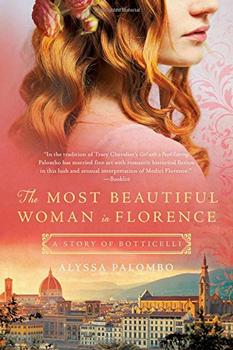Summary | Excerpt | Reading Guide | Reviews | Beyond the book | Read-Alikes | Genres & Themes | Author Bio

A haunting novel of rivalry, love, and betrayal that transports readers back to Renaissance Italy, Leonardo's Swans will have you dashing to the works of the great painter—not for clues to a mystery but to contemplate the secrets of the human heart.
Isabella d'Este,
daughter of the Duke of Ferrara, born into privilege and the political and
artistic turbulence of Renaissance Italy, is a stunning black-eyed blonde and a
precocious lover and collector of art. Worldly and ambitious, she has never
envied her less attractive sister, the spirited but naïve Beatrice, until, by a
quirk of fate, Beatrice is betrothed to the future Duke of Milan. Although he is
more than twice their age, openly lives with his mistress, and is reputedly
trying to eliminate the current duke by nefarious means, Ludovico Sforza is
Isabella's match in intellect and passion for all things of beauty. Only he
would allow her to fulfill her destiny: to reign over one of the world's most
powerful and enlightened realms and be immortalized in oil by the genius
Leonardo da Vinci.
Though Isabella weds the Marquis of Mantua, a man she has loved since childhood,
Beatrice's fortunes rise effortlessly through her marriage to Ludovico. The two
sisters compete for supremacy in the illustrious courts of Europe, and Isabella
vows that she will not rest until she wrestles back her true fate and plays
temptress to the sensuous Ludovico and muse to the great Leonardo. But when
Ludovico's grand plan to control Europe begins to crumble, immortality through
art becomes a luxury, and the two sisters must choose between familial loyalty
and survival in the treacherous political climate.
Leonardo's Swans is an exceptionally vivid evocation of the artist during
his years in the glittering court of Milan, re-creating the thrilling moments
when he conceived The Last Supper and the Mona Lisa. It portrays a
genius ahead of his time who can rarely escape the demands of his noble patrons
long enough to express his own artistic vision.
A haunting novel of rivalry, love, and betrayal that transports readers back to
Renaissance Italy, Leonardo's Swans will have you dashing to the works of
the great painter—not for clues to a mystery but to contemplate the secrets of
the human heart.
If you enjoy historical fiction, and in particular books that focus on the lives of famous artists such as those by Susan Vreeland, Tracy Chevalier and especially Sarah Dunant, you should take a good look at Leonardo's Swans; particularly so if you have an interest in the Renaissance in general, and Leonardo da Vinci in particular...continued
Full Review
(310 words)
This review is available to non-members for a limited time. For full access,
become a member today.
(Reviewed by BookBrowse Review Team).
A pictorial tour of Leonardo's Swans.
Did you know? The Alfa ...
This "beyond the book" feature is available to non-members for a limited time. Join today for full access.

If you liked Leonardo's Swans, try these:

The Most Beautiful Woman in Florence
by Alyssa Palombo
Published 2017
Alyssa Palombo's The Most Beautiful Woman in Florence vividly captures the dangerous allure of the artist and muse bond with candor and unforgettable passion.

by Andrew Greig
Published 2016
Elderly narrator Harry Langton looks back on the adventures and friends of his youth, transporting the reader to the Scottish Borderlands at the end of the 16th century...